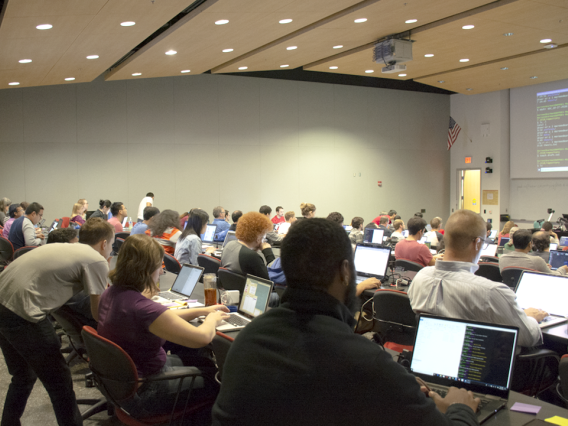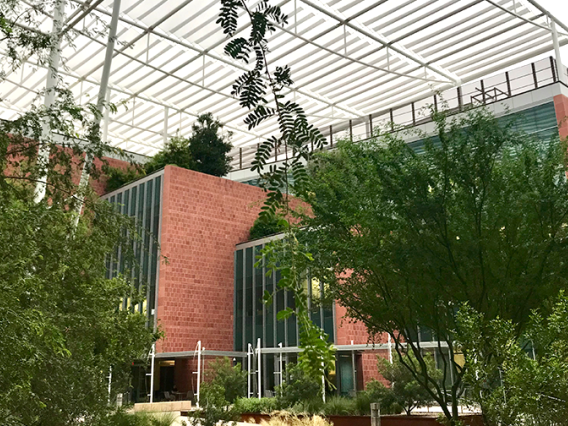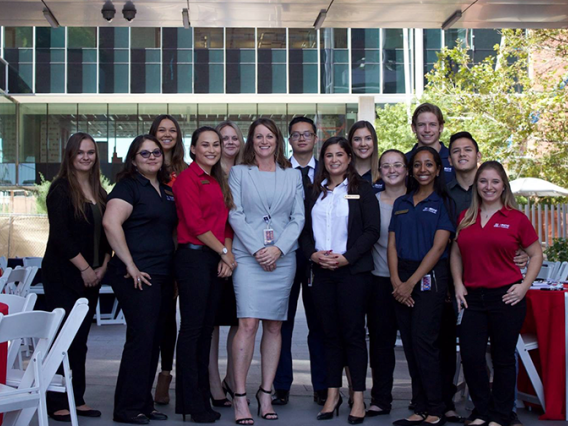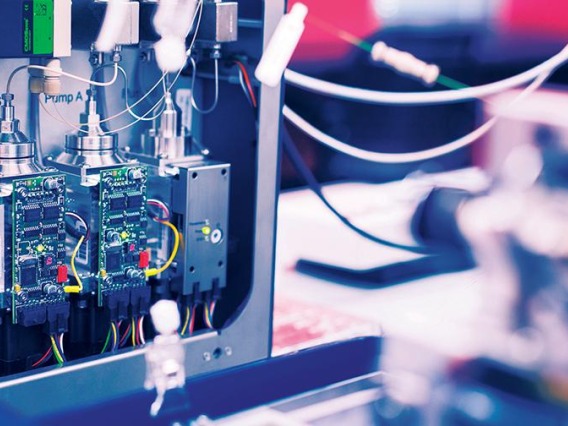Collaborative Environment
Interaction and flexibility were two key inspirations in the design of the spectacular BIO5 facility in the 177,000 square foot Thomas W. Keating Bioresearch Building. Open labs, moveable equipment, and plenty of indoor/outdoor meeting spaces encourage collaboration and team-science thinking among the 350+ faculty, research staff, and students who come together here from all over the University of Arizona.

Seminars and Workshops
Each year, BIO5 hosts and leads dozens of interdisciplinary seminars and conferences and hands-on training workshops to create connections and encourage the sharing of knowledge. Topics range from Bayesian statistics, to virus genomics, to transcranial magnetic stimulation, to plant breeding, to resilience and independence in aging, to the role of digital technology and virtual reality in healthcare, and much more.

Seed Grants
BIO5’s commitment to supporting innovative projects and new ideas to further interdisciplinary, catalytic early-stage research includes funding seed, pilot, and equipment grants totaling over $2M each year. Projects have included novel pathophysiological approaches used in the development of more precise therapeutics for childhood epilepsy, tackling the COVID-19 pandemic, advancing genomic data to help solve the 10-billion people question, using machine learning and visualization on social media to detect Type 2 diabetes risk, and many more.

Staff
BIO5 staff is here to support the institutional tri-mission of improving health, engaging students, and impacting Arizona. Staff provide direction and resources related to advancing research, economic development, innovation, entrepreneurship, external engagement, industry relations, knowledge dissemination and profile building, and education, outreach, and training initiatives benefiting Arizona.

Services and Equipment
Members of BIO5 have access to a number of valuable facilities, resources, and equipment including cores in genomics, computing, imaging, drug development, and more.

